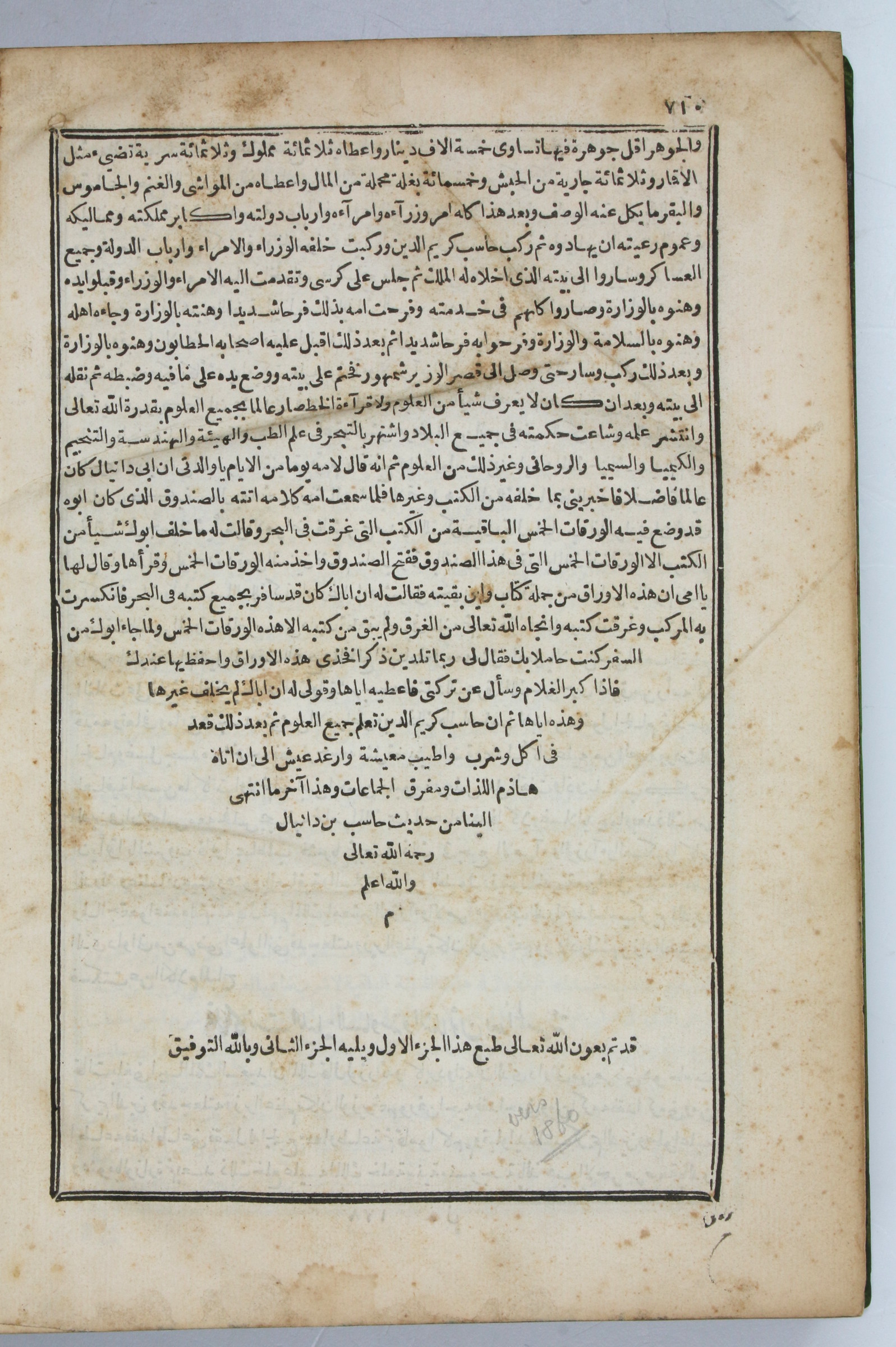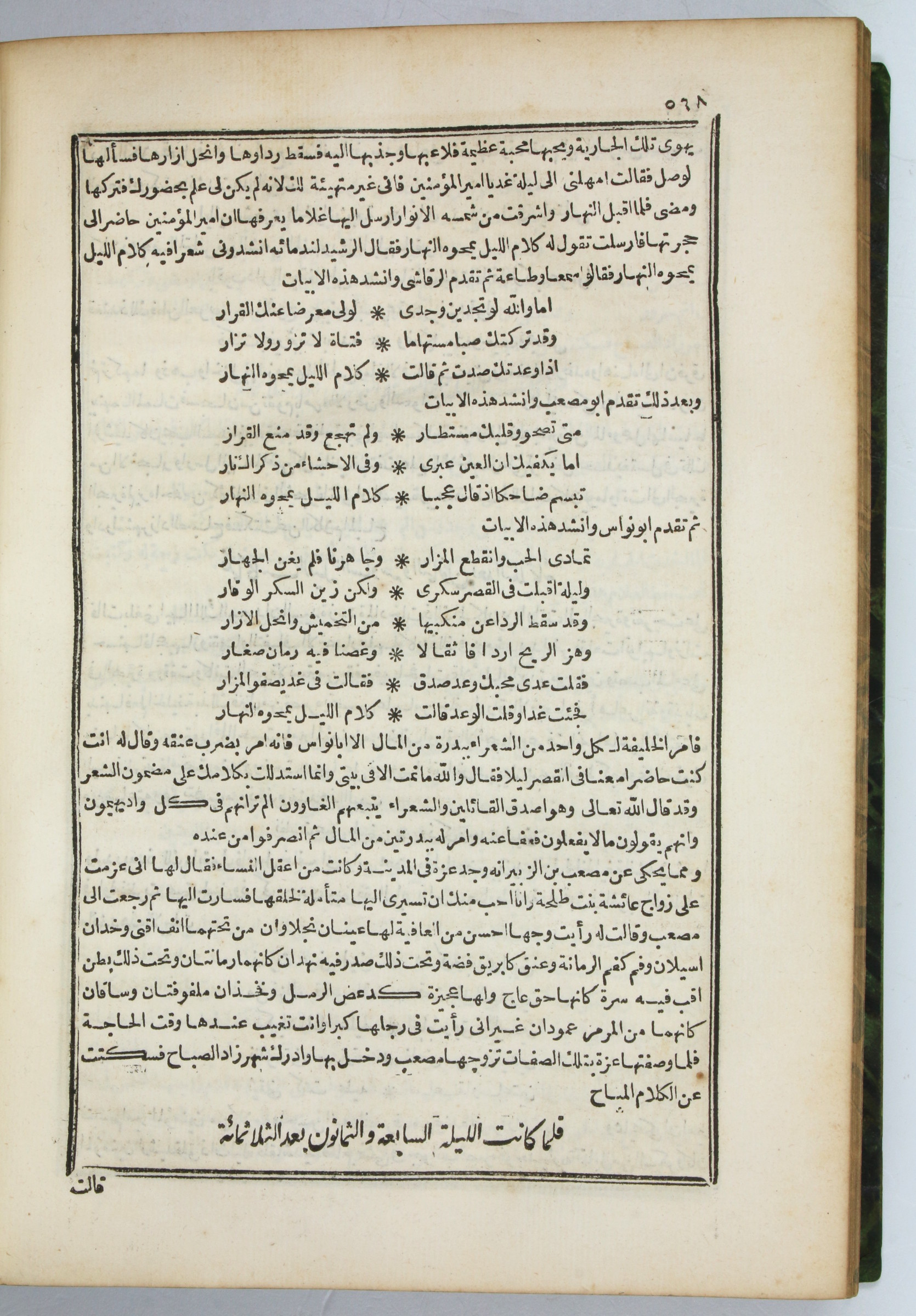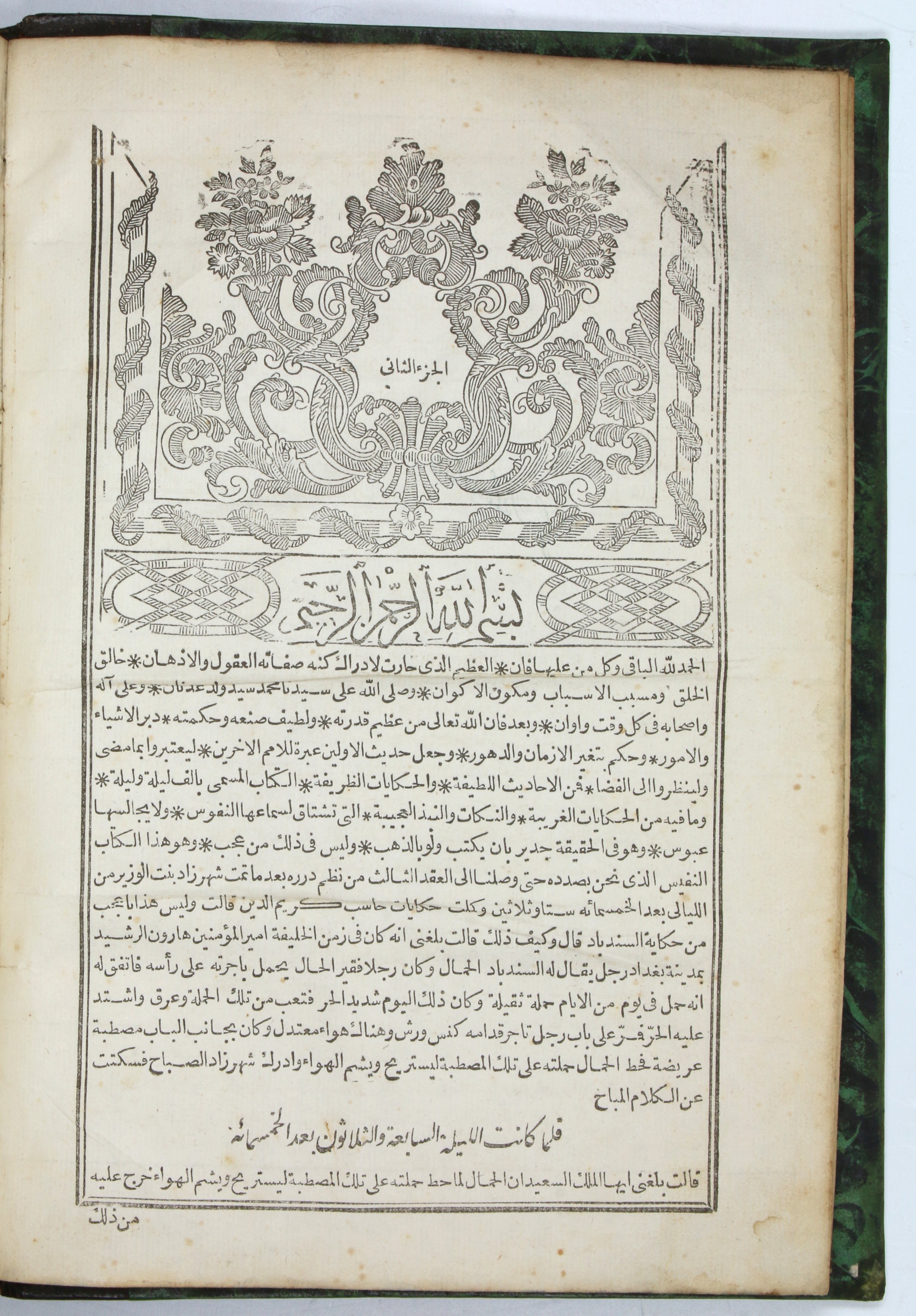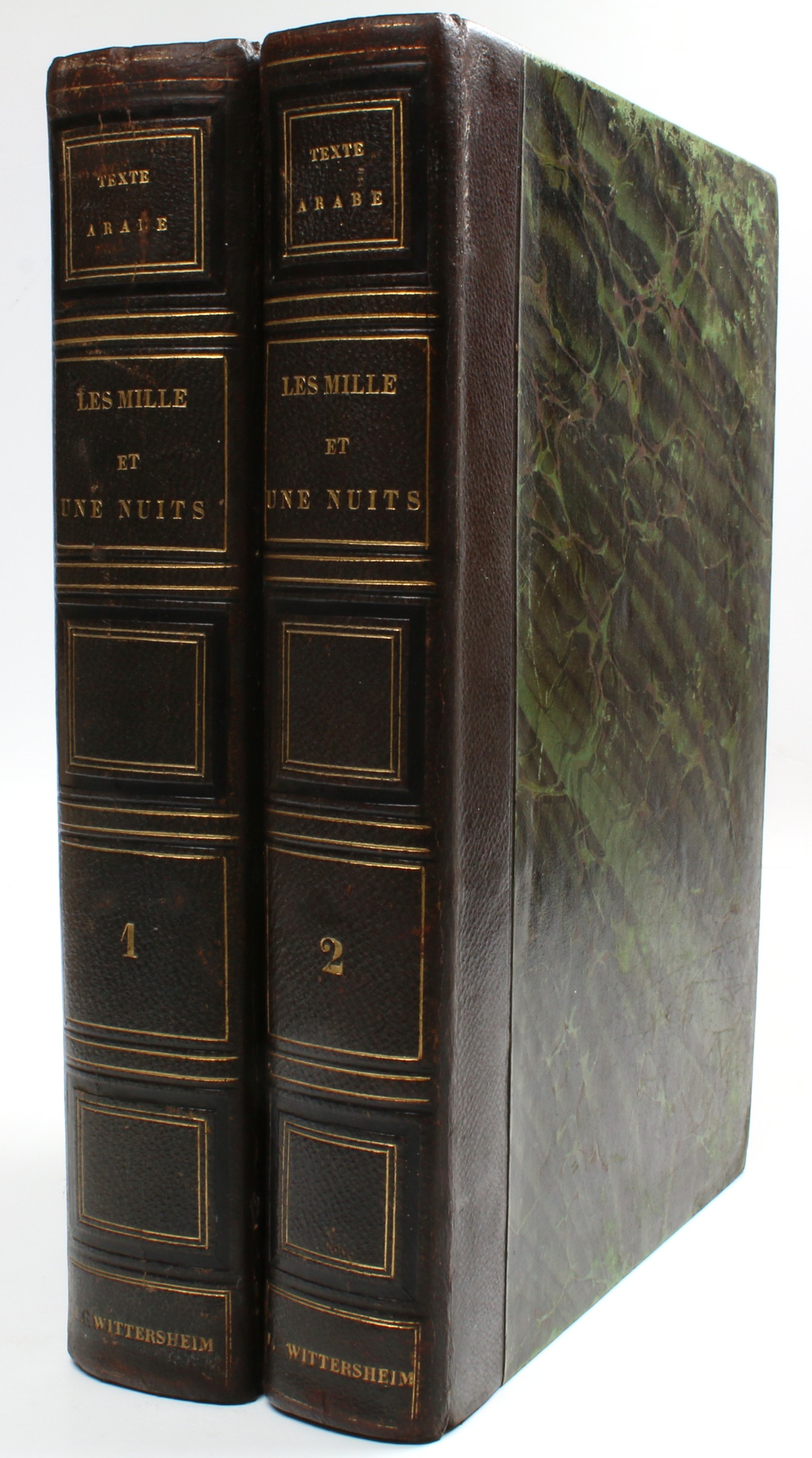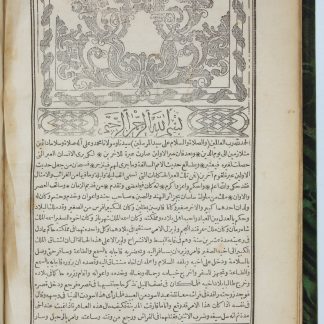Exceptionally rare: the Thousand and One Nights, the first complete edition in Arabic and the first edition printed in the Arab world
Kitab Alf layla wa-layla. Vols. I and II.
Royal 8vo (195 x 265 mm). 2 vols. 710 pp. 620 pp. (with printer error on final page number, which reads 120). Printed in Arabic throughout, floral woodcut sarlawh to each volume, text within two-line frame throughout, titles in nasta'liq types. Bound in somewhat later 19th century leather-backed green marbled boards; spine in six compartments ruled and titled in gilt. Marbled endpapers.
€ 300,000.00
First complete edition in Arabic of the Thousand and One Nights, and the first edition printed in the Arab world. Very rare, with only eight copies of the set located in libraries worldwide (the Spanish National Research Council, the Library of the Congress, Leiden University, Danish Union Catalogue, Danish Royal Library, Bibliothèque Nationale de France, Huntington, and Yale).
The Bulaq edition was preceded by another two-volume edition printed at Calcutta between 1814 and 1818, which contained a selection of 200 "Nights" only; the German orientalist Max Habicht began his multi-volume, so-called Breslau edition in 1824, though it remained incomplete on his death in 1839, and at any rate used the Bulaq text as one of its many sources. The Bulaq edition was prepared by one 'Abd al-Rahman al-Sifti al-Sharqawi, probably from a single manuscript which is now lost. It proved "more correct than the garbled and semi-colloquial renderings given by the manuscripts used in the compilations of Calcutta I and Breslau", and was instrumental in stabilising the Thousand and One Nights corpus (Irwin, The Arabian Nights: A Companion, p. 44). It was the main source for Edward Lane's pioneering English translation (1889-41) and for the last of the four historically important Arabic editions, published at Calcutta in 1839-42 (and known as "Calcutta II"). Bulaq and Calcutta II "superseded almost completely all other texts and formed the general notion of the Arabian Nights. For more than half a century it was neither questioned nor contested that the text of the Bulaq and Calcutta II editions was the true and authentic text" (Marzolph, The Arabian Nights Reader, p. 88).
The printing press at Bulaq, Cairo, founded in 1821 by Muhammad 'Ali Pasha, was the first indigenous press in Egypt and one of the first anywhere in the Arab world, its literary output catering to a keen export market and increased demand among the expanding professional classes of Muhammad 'Ali's Egypt. For the first few years the press used types cast in Italy, then France. However, "in 1826 Muhammad 'Ali sent a delegation to Europe to study printing, and by the 1830s printing had reached a good technical level at Bulaq" (Kent et al., eds., Encyclopaedia of Library and Information Science, vol. 24, p. 63). The present edition exhibits the high standards of Bulaq printing, with the main text composed in authentic and legible naskh-style types, interspersed with attractive headings in nasta'liq.
The bindings of these copies evidence some very gentle wear and subtle professional repairs. Very few hints of internal spotting, with text quite bright and clean and binding firm and in very good condition.
Provenance: from the collection of the Dutch bibliophile Clemens Haro Beels (1889-1972), notable for his distinctive illustrated bookplates, two attractive examples of which appear on the rear pastedown in both volumes. Also with the ownership stamp of G. Blondat, and a booksellers' plate from Bauer, based at number 7 Passage des Petits-Pères, Paris.
Chauvin IV, 18, 20K. Brunet III, 1715. Graesse IV, 523. Fawzi M. Tadrus, Printing in the Arab World with emphasis on Bulaq Press (Doha: University of Qatar, 1982), p. 64. Middle Eastern Languages and the Print Revolution. A Cross-Cultural Encounter, Westhofen 2002, p. 184. Heinz Grotzfeld. Neglected Conclusions of the "Arabian Nights": Gleanings in Forgotten and Overlooked Recensions. In: Journal of Arabic Literature, Vol. 16, (1985), pp. 73-87. Ulrich Marzolph (ed.). The Arabian nights in transnational perspective, Wayne State University Press 2007, p. 51.


